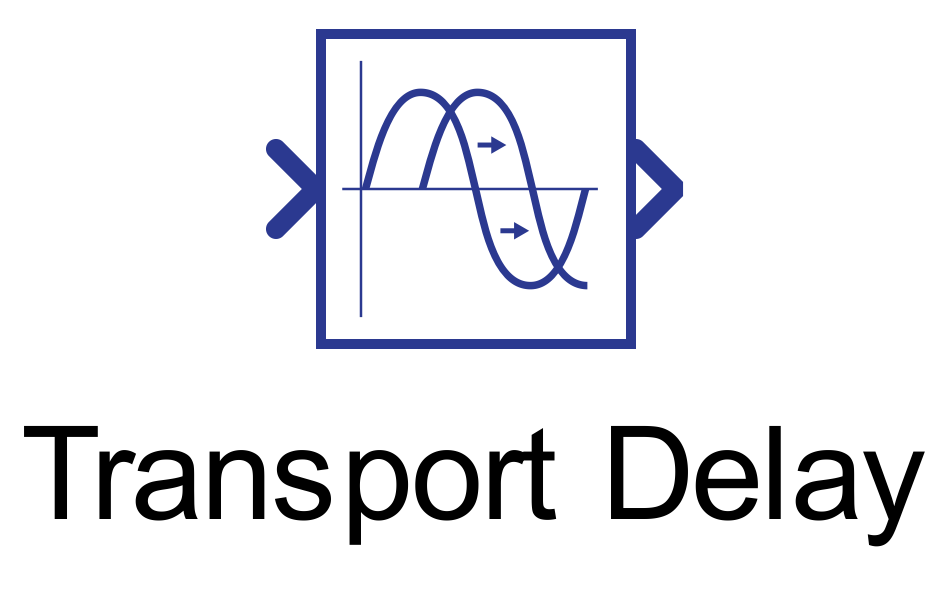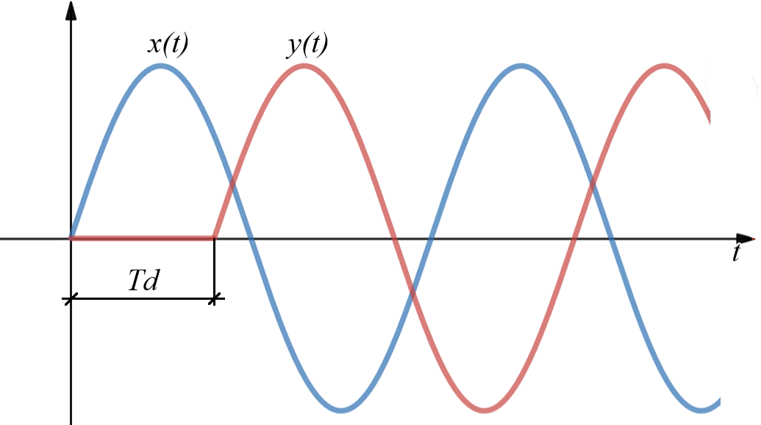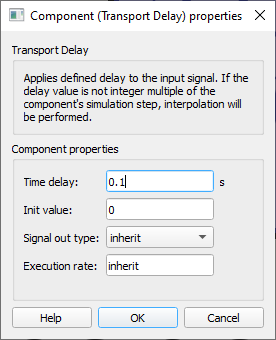Transport delay
Description of the Transport Delay component in Schematic Editor, which outputs the input signal after a specified amount of time.
Component Icon

Description
Transport delay component outputs the input signal after a specified amount of time.
The delay value is given in seconds and if the delay value is not integer multiple of the component's simulation step, interpolation will be performed.
The output signal of the transport delay component can be represented by the following mathematical equation:
y(t) = x (t - Td)
Where Td is the specified delay time to be applied to the input signal set on the component property. Figure 2 illustrates the behavior of the delay component

Ports
- Input (in)
- Original input signal.
- Supported types: uint, int and real.
- Vector support: yes.
- Original input signal.
- Output (out)
- Delayed signal, which is the input signal delayed by Td
seconds.
- Supported types: uint, int and real.
- The output type is defined by Signal out type property
- Vector support: yes.
- The vector length is inherited from the input signal.
- Supported types: uint, int and real.
- Delayed signal, which is the input signal delayed by Td
seconds.
Properties

- Time delay
- Type in the time delay, in seconds, to be applied to the input signal.
- Initial value
- Type in the initial value set on the block output at the beginning of the simulation.
- Signal out type
- Select the output signal type. It can be “real”, “int”, “uint”, or “inherit”.
- Execution rate
- Type in the desired signal processing execution rate. This value must be compatible with other signal processing components of the same circuit: the value must be a multiple of the fastest execution rate in the circuit. There can be up to four different execution rates. To specify the execution rate, you can use either decimal (e.g. 0.001) or exponential values (e.g. 1e-3) in seconds. Alternatively, you can type in ‘inherit’ in which case the component will be assigned execution rate based on the execution rate of the components it is receiving input from.